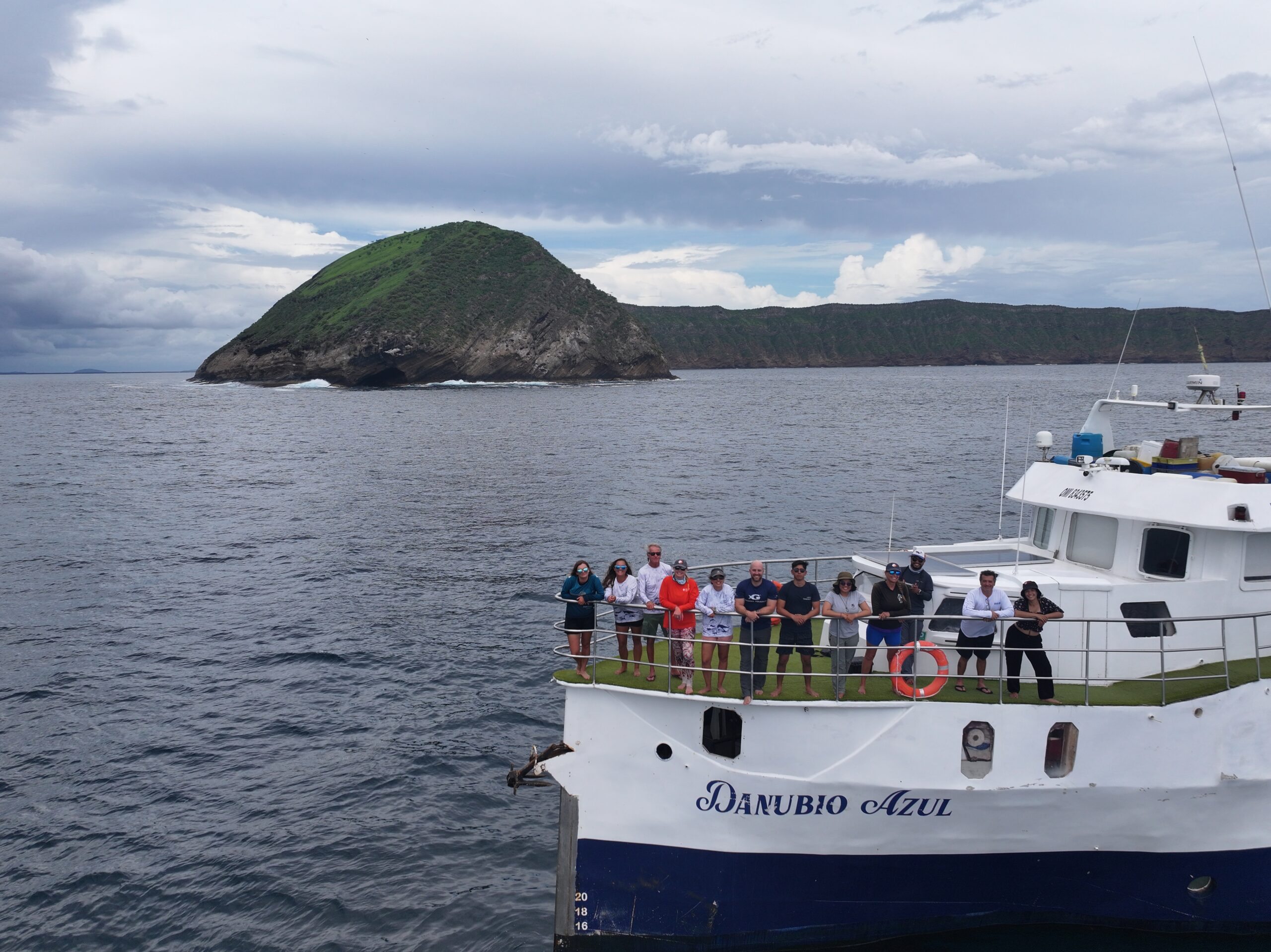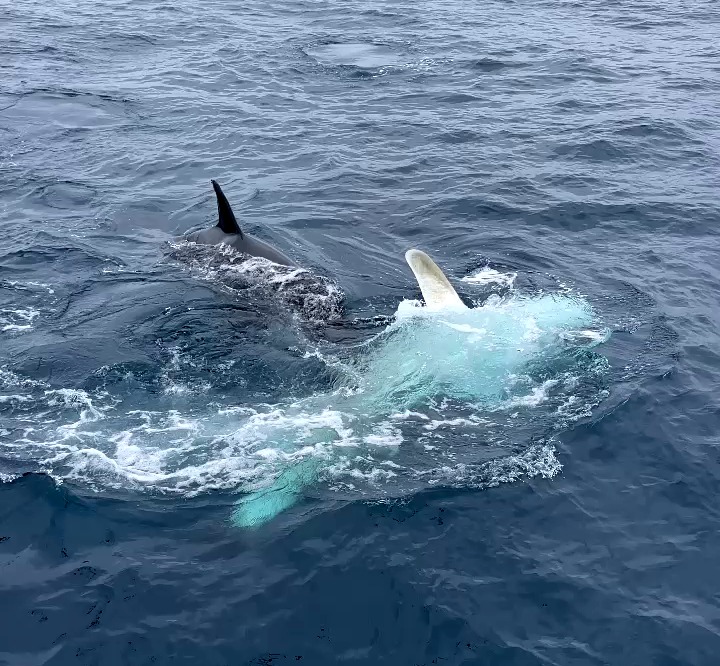Isabela Island, Ecuador – Scientists on a Greenpeace expedition in the Galápagos Marine Reserve believe they have found what could be the first known smooth hammerhead shark nursery in the region after observing several young pups. For the first time in the Galápagos, the team was also able to track a subadult smooth hammerhead, which they named after the actress and ocean ambassador Alba Flores.
The Galápagos is famous for its aggregations of adult scalloped hammerhead sharks (Sphyrna lewini), but the smooth hammerhead (Sphyrna zygaena) is rarely observed and has never been tracked until now.[1] After several observations and documentations of juvenile smooth hammerheads in a small bay at Isabela Island, scientists now believe that this could be the first known nursery for smooth hammerheads in the archipelago.
Alex Hearn from Universidad San Francisco de Quito, Galapagos Science Center and MigraMar, lead scientist on the expedition, said: “This is an amazing discovery! Not only is this species rarely reported here, but in this bay we have found numerous young-of-the-year, suggesting that this might be a nursery site.”
Paola Sangolquí, Marine Coordinator at Jocotoco Conservation Foundation, said: “The Galápagos Marine Reserve never stops surprising me. This finding shows us the importance of protecting the reserve and its surrounding waters. I hope all the information collected throughout this six weeks expedition will help to make a strong case for the ratification of the high seas treaty and the protection of migratory species, who don’t know about boundaries.”
To be confirmed as a bona fide nursery site, three criteria need to be fulfilled – first, there must be more shark pups here than in surrounding areas; second, the sharks must reside at the site for extended periods of time, and third, the site must be used by successive generations of pups.
Alex Hearn said: “If we can learn why the smooth hammerhead pups use this particular location, we can make predictions about where else we might find them across the region. Here in Galapágos, the sharks are protected, but this is not the case when they, as a migratory species, leave the reserve. If we can map the sharks’ key habitats, we can take steps to push for more protected areas in the high seas, where these sharks migrate, to avoid them being caught in the first place.”
The science team were able to fit a satellite tracking device to a subadult smooth hammerhead – a female they named “Alba” after the actress and ocean conservation advocate Alba Flores, who was on board the Greenpeace ship Arctic Sunrise during its first week in the Galapágos. As the scientists track Alba the shark’s movements, they will be able to assess her vulnerability if she leaves the protected waters of the Galapágos Marine Reserve.
Alba Flores, best-known for playing Nairobi in the hit Netflix series Money Heist, said: “I am still very moved by my experience in the Galapágos. Knowing that a shark now bears my first name is a humbling thought and an important symbol for me which commits me to protecting the oceans even more. I’m determined to continue to speak out on the subject and support the people who work every day to defend this amazing wildlife.”
Sharks are key species to keep the balance in fish populations in the ocean, they help keep the food chain in the right track controlling prey populations. This prevents overgrazing and therefore biodiversity. Hammerhead sharks are also sensitive to changes in their environment, making them indicator species for the health of marine ecosystems. The shark tracking is being conducted by a team of independent scientists on board the Arctic Sunrise and the data collected during the expedition contributes to securing future ocean protection and the futures of generations of sharks in the region.[2]
Sophie Cooke, Arctic Sunrise expedition lead, Greenpeace UK, said: “Previously, it was impossible to protect this high seas area where these sharks migrate. But now, using the recently won UN Global Ocean Treaty, governments have a chance to boost protection of the migratory species in this region and provide a powerful example to the rest of the world of how to protect the high seas.”
Notes:
[1] Smooth hammerhead sharks lack the characteristic cleft in the centre of their hammer-shaped head, which gives scalloped hammerhead their name, and is classed as vulnerable on the IUCN Red List of Endangered Species. Hammerhead sharks are particularly vulnerable to longlining, and fishing fleets today operate just outside the borders of the reserve. In fact, the last reliable records of smooth hammerhead sharks in Galápagos came from an experimental longline fishery inside the reserve in 2004.
[2] The research expedition aims to emphasise the power of marine protection, documenting the success of the Galápagos Marine Reserve and the incredible wildlife and habitats of the sea near the Galápagos.






